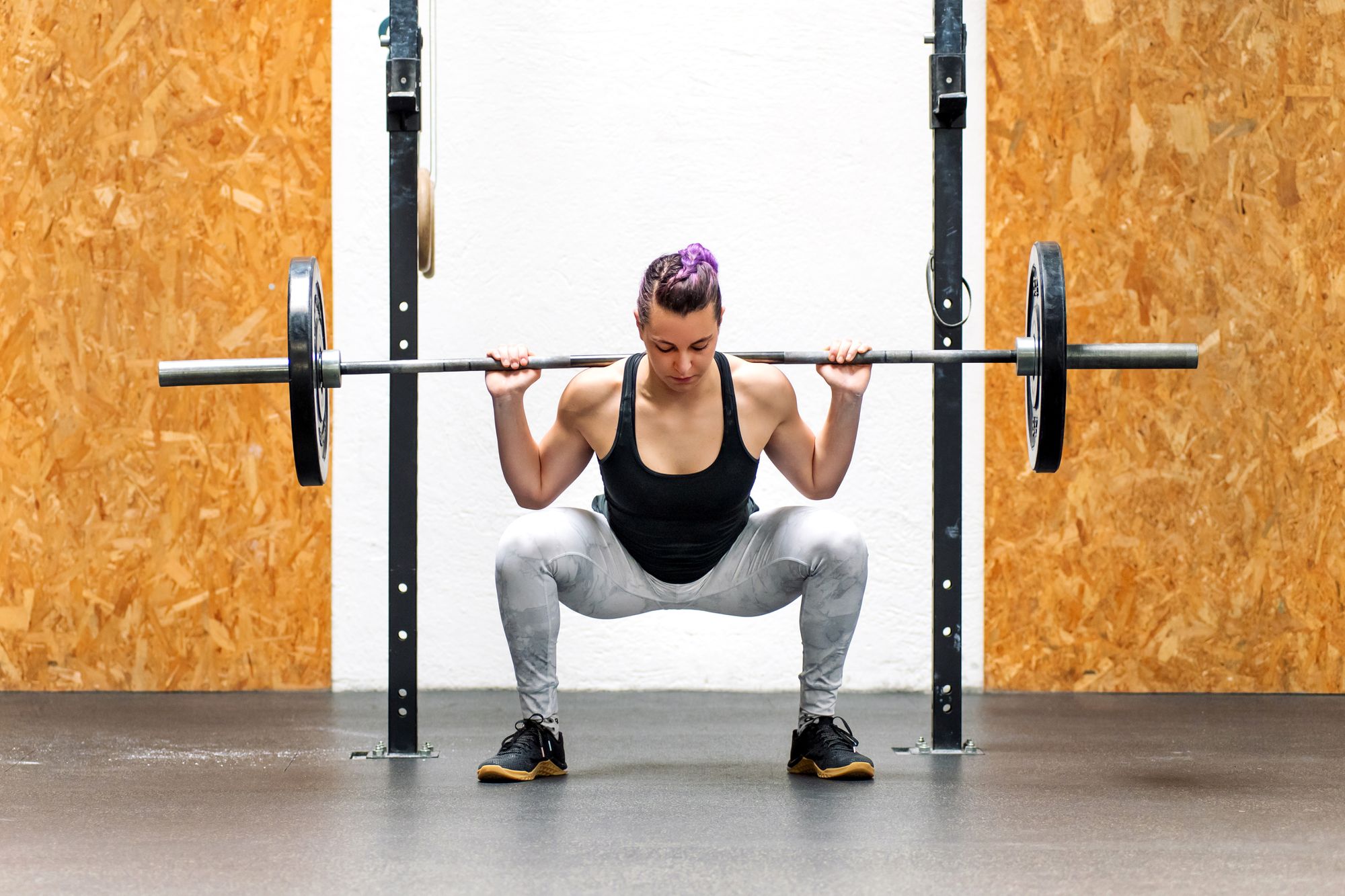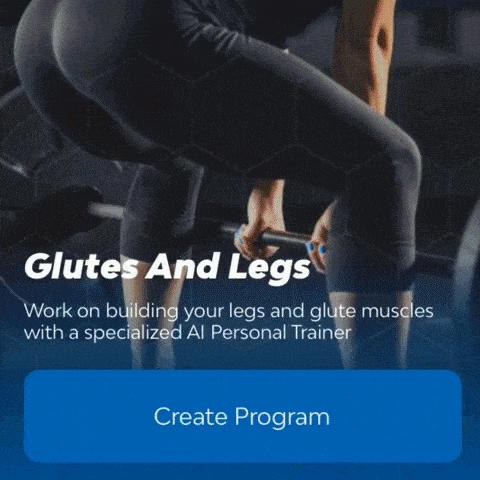These Myths About Female Fitness Are Holding You Back
Flip through any women's fitness magazine – you'd be hard pressed to read 3 pages of content with being shown a 'revolutionary' workout routine that promises to melt all your fat off within 2 weeks. And the best part? All you need are 2 KG dumbbells.

I'll be honest with you
I detest nearly all fitness advice targeted at women; even if I'm one myself. I mean: flip through any women's fitness magazine – you'd be hard pressed to read 3 pages of content with being shown a 'revolutionary' workout routine that promises to melt all your fat off within 2 weeks. And the best part? All you need are 2 KG dumbbells.
Well, or so they say. But often, if you follow through with the marketed routine, you'll find that your body looks no different than when you first picked up the magazine. The whole female fitness industry lingo makes me want to vomit, and I feel morally compelled to bust the myths I’ve heard about women’s strength training.
#1 – You will look bulky if you train heavy
Let me set the record straight: that fitness model you see on the magazine covers? She most definitely didn’t get her perky butt from bodyweight training; she probably (literally) worked her ass off for it by deadlifting and hip thrusting significant amounts of weights in the gym.
Many women fear that weight training will make them so well-muscled that they end up looking like a female version of Thor from Avengers.

But if you’d just spend a couple of months, or even years, in the gym, you'll find that packing on lean muscle just isn't that easy, especially after the honeymoon 'newbie-gains' period.
You see: us women, typically, just do not have enough testosterone – a male hormone responsible for the stimulation of muscle growth – to gain as much muscle mass as men.
I know what you’re thinking: well, what about the famous female bodybuilders who compete in shows? Given that females are biologically-limited in our production of testosterone, it’s highly likely that they may have resorted to exogenous testosterone injections and/ or other muscle stimulating steroids to look the way we do.
Ultimately, unless you’re injecting yourself with testosterone every single day (which I hope you’re not), it’s highly unlikely that you’ll get bulky from training heavy.
#2 – You will get fat if you eat more than 3 meals a day
Let me just start by saying: you will not. Really. I’ll bust this myth in the shortest way possible.
If you’ve been reading our previous articles, you should know that the primary principle of weight gain, or weight loss, revolves around calorie-balance (CICO). If you eat more calories than you expend in a day, you’ll gain weight. On the other hand, if you eat less than you burn, you’ll gain weight. It has nothing to do with the frequency of your meals – at all.
#3 – You don’t need as much protein as men
Okay, given that almost all of the research investigating protein synthesis after strength training is done with male subjects, I admit that this myth does seem valid and reasonable.
But recent research has shown that the protein needs of female lifters when expressed per KG of lean muscle mass, are virtually identical. Regardless of gender, protein requirements relative to bodyweight will be lower for people with more fat. Protein requirements scale with fat-free mass: the more lean muscle mass you have, the more protein you'd need to consume.

Quite honestly, this myth can be considered a half-truth. You see: men are generally leaner than women at the same bodyweight; this signifies that men would naturally have slightly higher protein requirements.
But when we have a man and a woman with the same, exact, body composition and body weight, protein requirements will be identical.
Takeaway? If you are looking to maximize gains in lean mass, you should aim to consume anywhere between 1.2 to 2.0 grams of protein. Yes – the same advice goes for men.
#4 – Your muscles turn into fat when you stop working out
Well, when you really think about it, this statement is almost like saying apples would magically turn into oranges when you leave them in the refrigerator overnight. It’s just not possible.
But wait – why do people get wobbly around the mid-section, and jiggly on the arms after they've stopped working out for a while? Well, it's because those previously well-used muscles start to atrophy – a process where they reduce in size. Your body doesn't convert muscle fibers into fat cells; the tissues just shrink.
Typically, when people stop going to the gym, their food choices suffer. Grilled chicken breasts for lunch turns into deep-fried chicken cutlets, hard-boiled eggs for breakfast becomes a full stack of honey-drenched pancakes. While those foods are not necessarily bad per se, they’re awfully dense in calories.
And if you’ve been paying attention, you’d know what happens when you eat more calories than you expend: yes, get fat. Refer to point #2. So: muscles don’t turn into fat cells – there’s simply a change in body composition.
#5 – You need to train the lower body every day to build a butt
I want you to pick up your phone and scroll through Instagram right now. Yes – right now.
Excellent – I trust that you’re back. Now, we might have lost some people because we all know how addictive Instagram can be, but I’m glad you’re here. Tell me: what did you notice about those female fitness models on Instagram? Exactly; they always look like they’re training lower body! Every single day.

Well, according to some of them (I'm not naming any names), you need to train the lower body every day to build a curvaceous body. And that couldn't be further from the truth. So – what's the truth then?
When it comes to muscle building, you need to give your muscles at least 2 to 3 days to recover after a heavy lifting session. The recovery period, where you either do nothing or just light training as previously covered in another of our articles, is where your muscles rebuild themselves and become stronger, and bigger.
If you're continually tearing your muscles down by training them daily, you will run into the problem of overtraining – a tipping point to which more exercise actually does more harm than good for you. You certainly don’t want that.
Conclusion
There’s a lot of bullshit when it comes to marketing fitness to women, but I hope I’ve managed to bust the common myths that surround the industry. But hey, if you’re still unsure of the frequency at which you should hit the gym to build yourself your dream body, I think GymStreak can help you out. We regularly publish science-based articles on our blog: they cover fitness topics ranging from muscle-building tips, to supplement guides.
Also, you should download GymStreak’s app– we provide you with instant, individualized workout plans that ensure you train all body parts equally, and with sufficient recovery periods between sessions.

References
Handelsman, D. J., Hirschberg, A. L., & Bermon, S. (2018). Circulating Testosterone as the Hormonal Basis of Sex Differences in Athletic Performance. Endocrine Reviews, 39(5), 803–829. https://doi.org/10.1210/er.2018-00020
Malowany, J. M., West, D. W. D., Williamson, E., Volterman, K. A., Abou Sawan, S., Mazzulla, M., & Moore, D. R. (2019). Protein to Maximize Whole-Body Anabolism in Resistance-trained Females after Exercise. Medicine and Science in Sports and Exercise, 51(4), 798–804. https://doi.org/10.1249/MSS.0000000000001832
